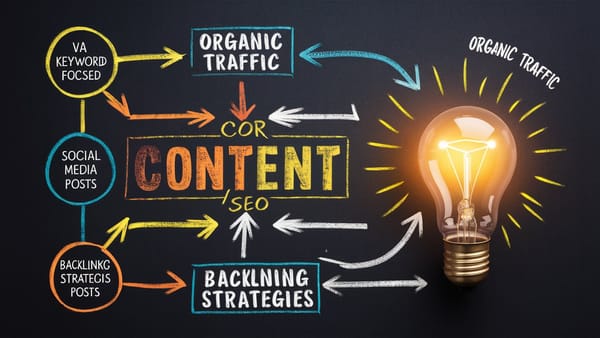Financing Your Dream Home: A Comprehensive Guide to Mortgages
Navigate the maze of mortgage options with a comprehensive guide tailored to financing your dream home, covering everything from loan types to finding the best rates and terms for your needs

Understanding Mortgages
When it comes to buying your dream home, one of the most important factors to consider is financing. Mortgages are a popular option for many homebuyers, as they provide a way to purchase a property without having to pay the full amount upfront. In this comprehensive guide, I will walk you through everything you need to know about mortgages, from the different types available to the steps involved in getting one.
Types of Mortgages
Before diving into the mortgage process, it's essential to understand the different types of mortgages that you can choose from. The most common types include fixed-rate mortgages, adjustable-rate mortgages, and government-backed mortgages. Fixed-rate mortgages offer stability with a consistent interest rate throughout the loan term, while adjustable-rate mortgages come with interest rates that can fluctuate over time. Government-backed mortgages, such as FHA loans and VA loans, are insured by the government, making them more accessible for certain groups of borrowers.

Steps to Getting a Mortgage
Now that you have a basic understanding of the types of mortgages available, let's discuss the steps involved in obtaining one. The first step is to assess your financial situation and determine how much you can afford to borrow. This involves evaluating your income, expenses, and credit score. Once you have a clear picture of your financial standing, you can move on to the next step, which is mortgage pre-approval.
Mortgage Pre-Approval
Getting pre-approved for a mortgage is a crucial step in the homebuying process. It involves providing the necessary documents to a lender who will evaluate your financial information and determine the maximum amount you can borrow. Pre-approval not only gives you a clear idea of your budget but also demonstrates to sellers that you are a serious buyer. To get pre-approved, you will need to gather documents such as pay stubs, tax returns, and bank statements to provide proof of your income and assets.
Finding the Right Mortgage Lender
Choosing the right mortgage lender is just as important as finding the right mortgage. With so many lenders out there, it can be overwhelming to make a decision. It's crucial to research and compare different lenders to find one that offers competitive interest rates, favorable terms, and excellent customer service. Reading reviews and getting recommendations from friends and family can also be helpful in finding a reputable lender. Take your time to shop around and gather multiple quotes before making a final decision.

Mortgage Rates and Terms
Mortgage rates and terms can vary significantly depending on various factors, including your credit score, down payment amount, and the market conditions. It's essential to understand how these factors can impact your mortgage rate and terms. A higher credit score and a larger down payment generally result in more favorable rates and terms. On the other hand, if your credit score is lower or you have a smaller down payment, you may be subject to higher interest rates or the need for mortgage insurance.
Calculating Your Mortgage Payments
Once you have a better understanding of mortgage rates and terms, it's time to calculate your mortgage payments. This involves using a mortgage calculator or working with your lender to determine how much you will owe each month. Your mortgage payment will consist of principal and interest, but it may also include additional costs such as property taxes and homeowner's insurance. It's crucial to factor in these expenses to get an accurate estimate of your monthly payments.
Mortgage Insurance
In some cases, you may be required to obtain mortgage insurance, especially if you have a smaller down payment or a government-backed loan. Mortgage insurance protects the lender in case the borrower defaults on the loan. There are different types of mortgage insurance, including private mortgage insurance (PMI) and mortgage insurance premiums (MIP) for government-backed loans. It's important to understand the requirements and costs associated with mortgage insurance before finalizing your mortgage.

Closing Costs and Fees
Closing costs and fees are an inevitable part of the mortgage process. These costs include various expenses, such as loan origination fees, appraisal fees, title insurance, and attorney fees. It's essential to budget for these costs, as they can add up significantly. Some lenders may offer options to roll closing costs into the loan, but this means you will be paying interest on those costs over the life of your mortgage. It's important to review and negotiate closing costs with your lender to ensure you are getting the best deal possible.
Tips for a Successful Mortgage Application
To increase your chances of a successful mortgage application, there are several tips you can follow. First and foremost, it's crucial to maintain a good credit score by paying your bills on time, keeping your credit utilization low, and avoiding new credit inquiries. Saving for a larger down payment can also help you secure a more favorable mortgage. Additionally, having all your financial documents organized and ready to provide to your lender can streamline the application process.
Common Mortgage Mistakes to Avoid
When applying for a mortgage, there are some common mistakes that you should avoid. One of the biggest mistakes is taking on additional debt or making large purchases before or during the mortgage application process. This can negatively impact your credit score and debt-to-income ratio, making it harder to qualify for a mortgage. It's also important to be honest and accurate when providing information to your lender. Any discrepancies or misrepresentations can lead to loan denial or even legal consequences.

Alternatives to Traditional Mortgages
While traditional mortgages are the most common way to finance a home, there are alternatives available if they don't suit your needs. One alternative is a rent-to-own agreement, where you rent a property with the option to buy it at a later date. Another option is seller financing, where the seller acts as the lender and provides financing for the buyer. It's important to thoroughly research and understand the terms and risks associated with these alternatives before pursuing them.
Conclusion
Financing your dream home through a mortgage can seem like a complex process, but with the right knowledge and preparation, it can be a smooth experience. Understanding the different types of mortgages, the steps involved in getting one, and the associated costs and fees is crucial for making informed decisions. By following the tips provided in this comprehensive guide, you can increase your chances of securing a mortgage that suits your needs and helps you achieve your homeownership goals.
Remember, buying a home is a significant financial commitment, so it's important to take your time, do your research, and consult with professionals, such as mortgage lenders and real estate agents, to ensure you make the best decisions for your situation.



